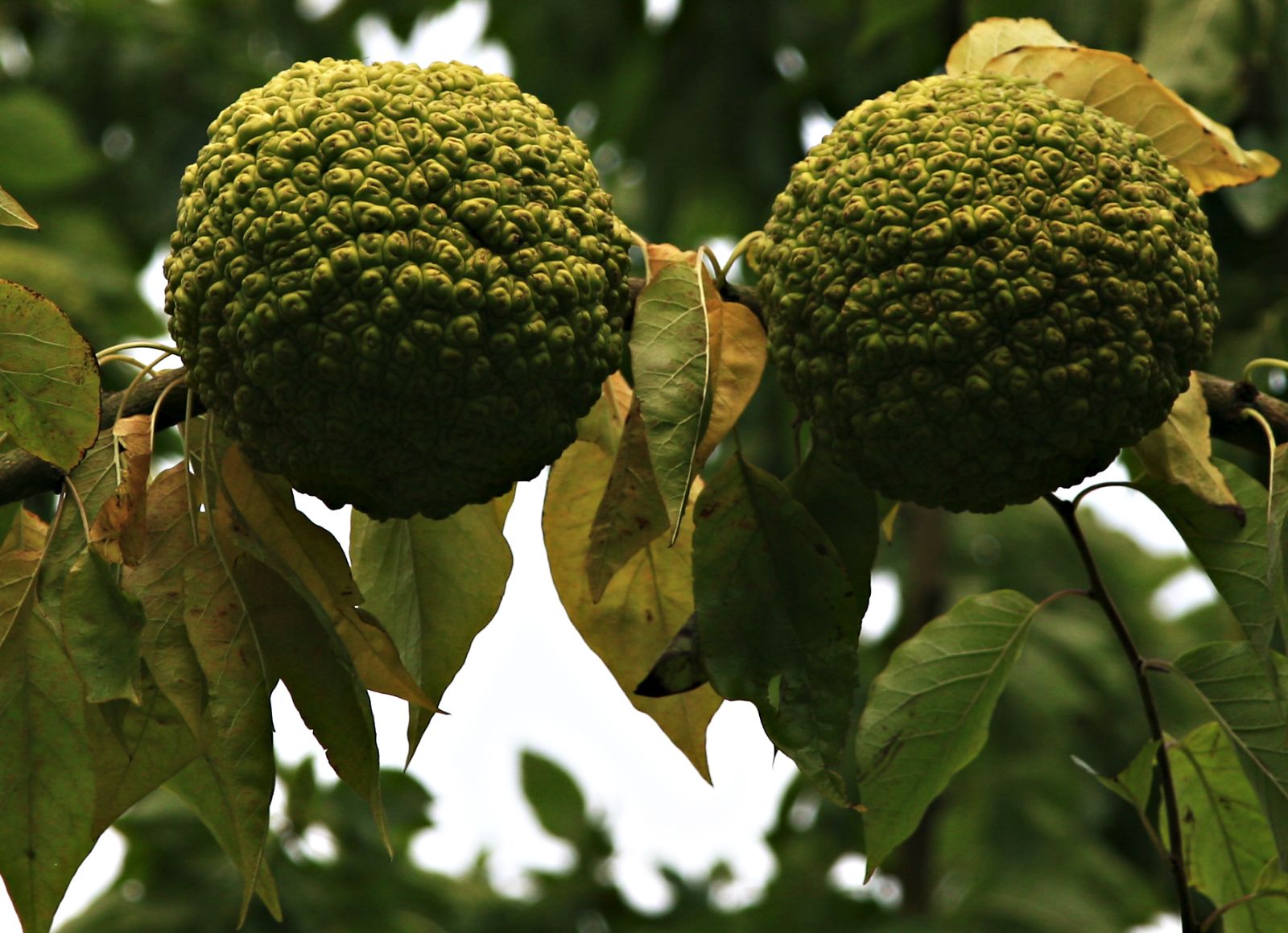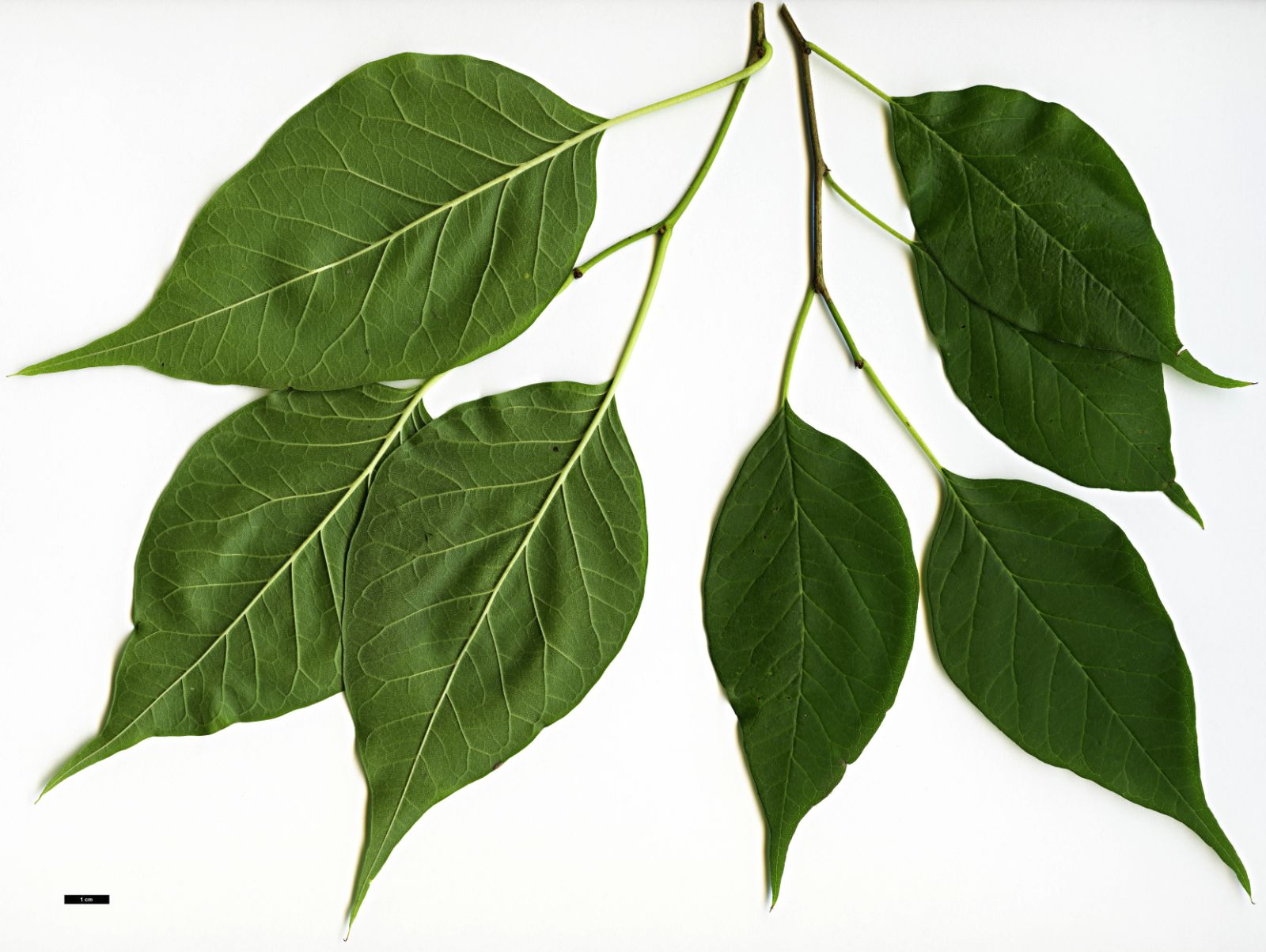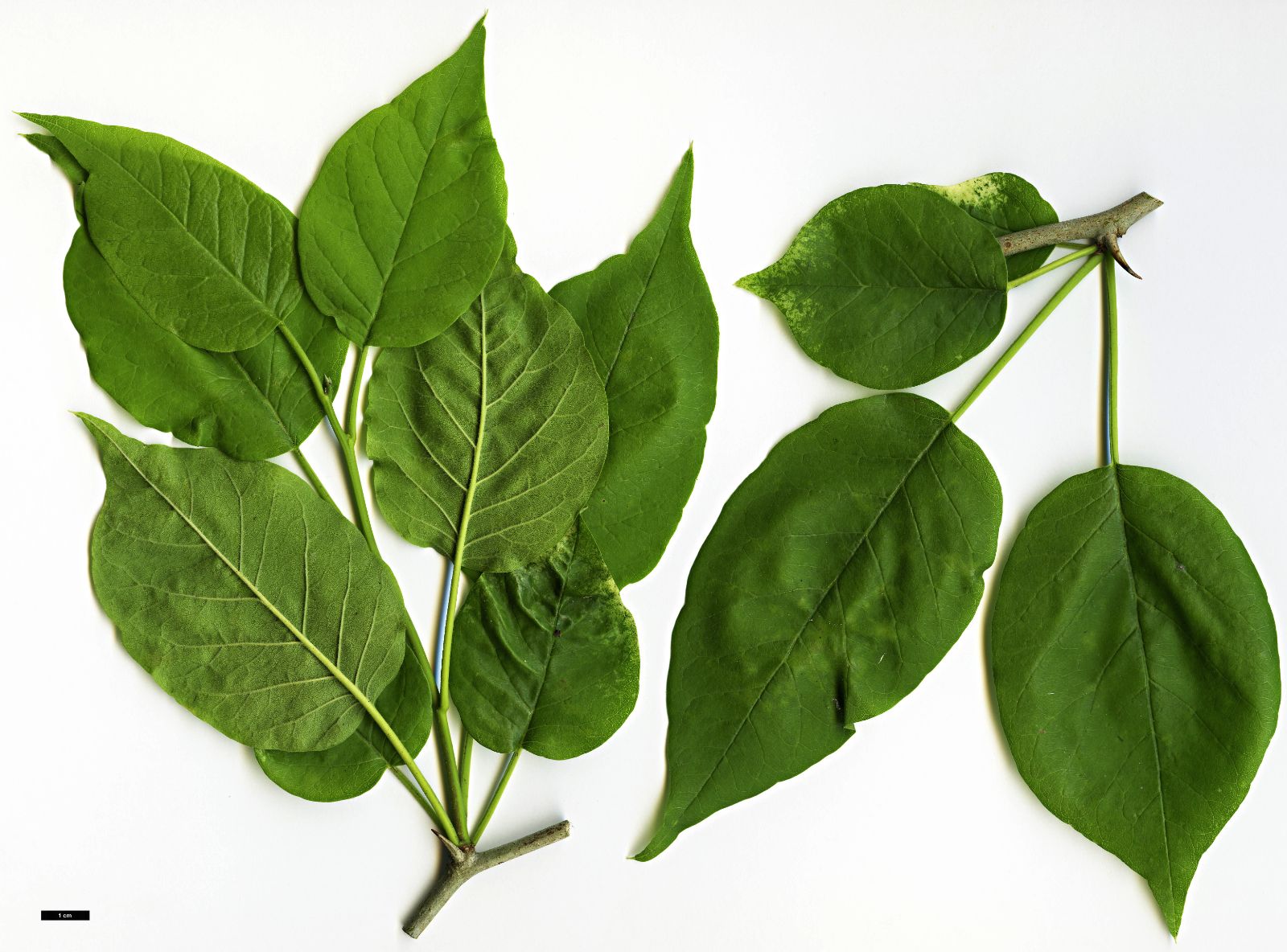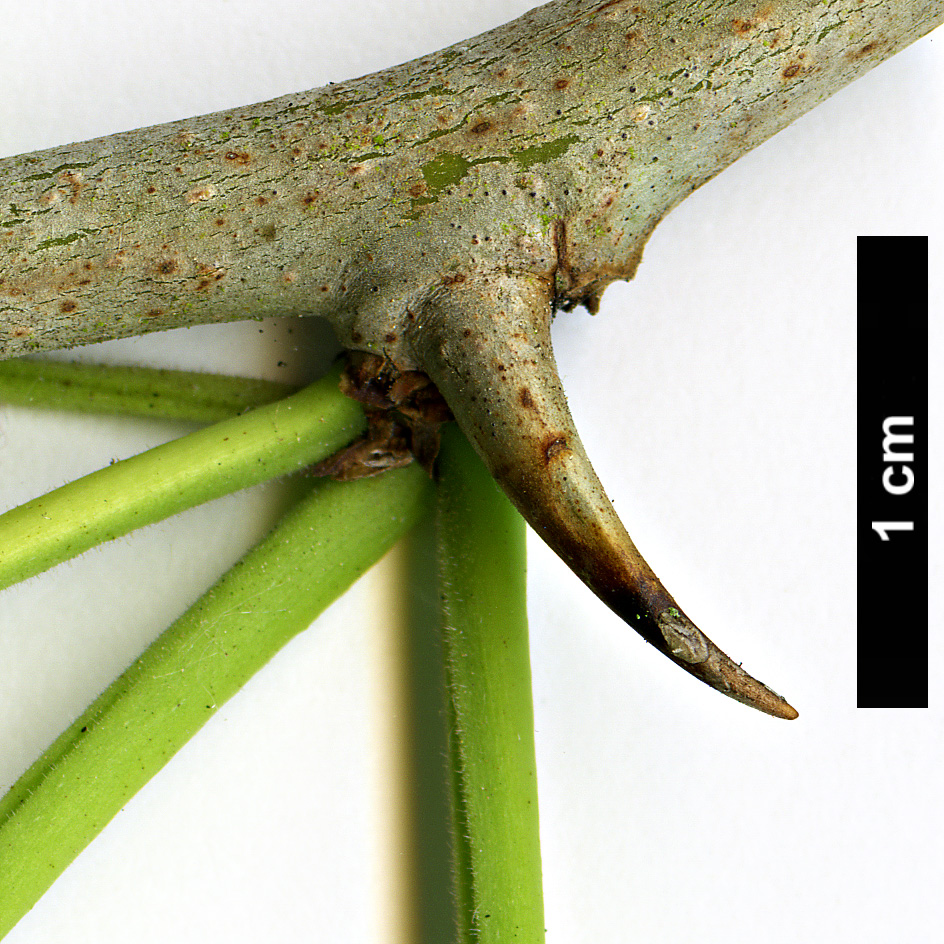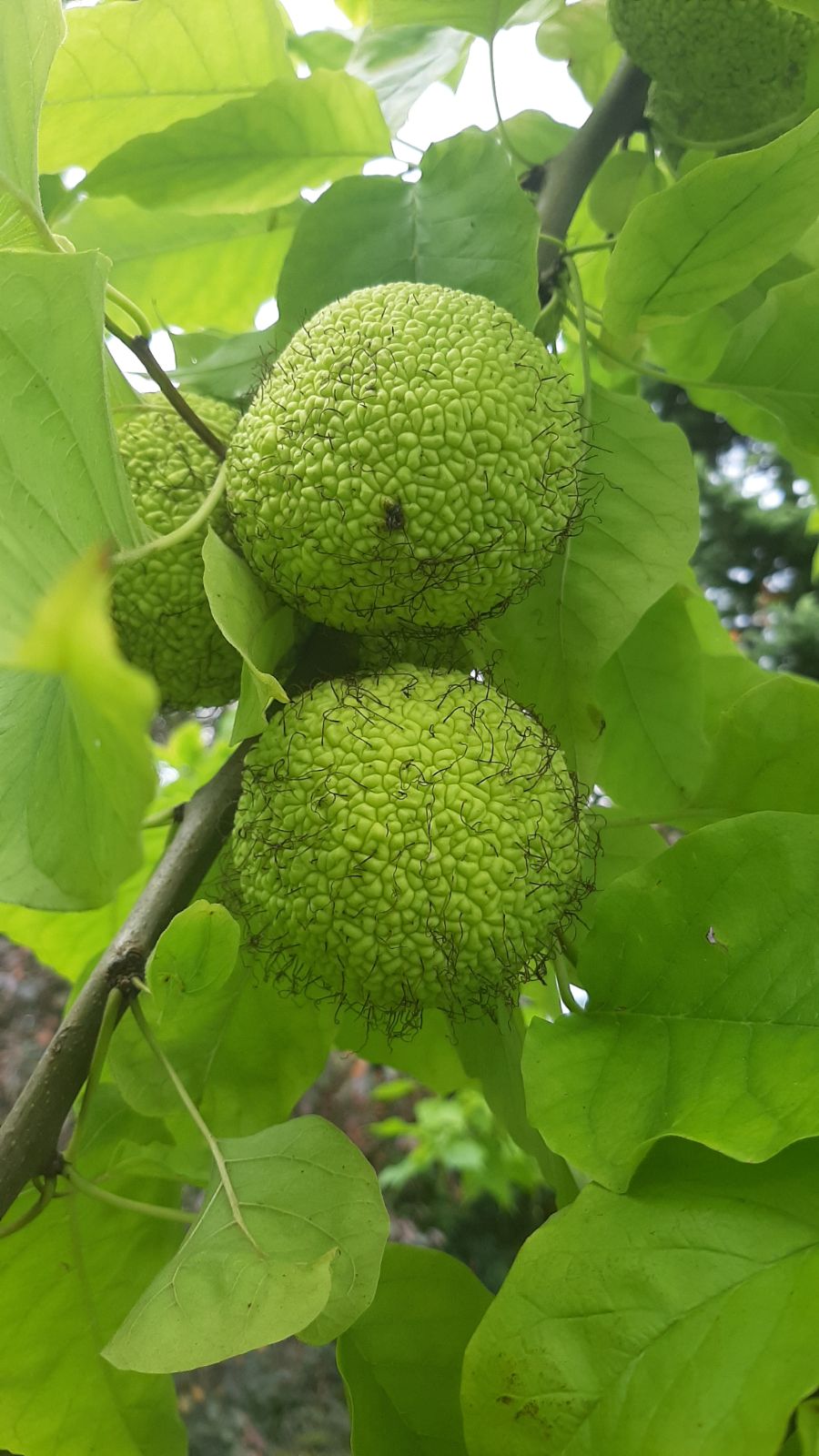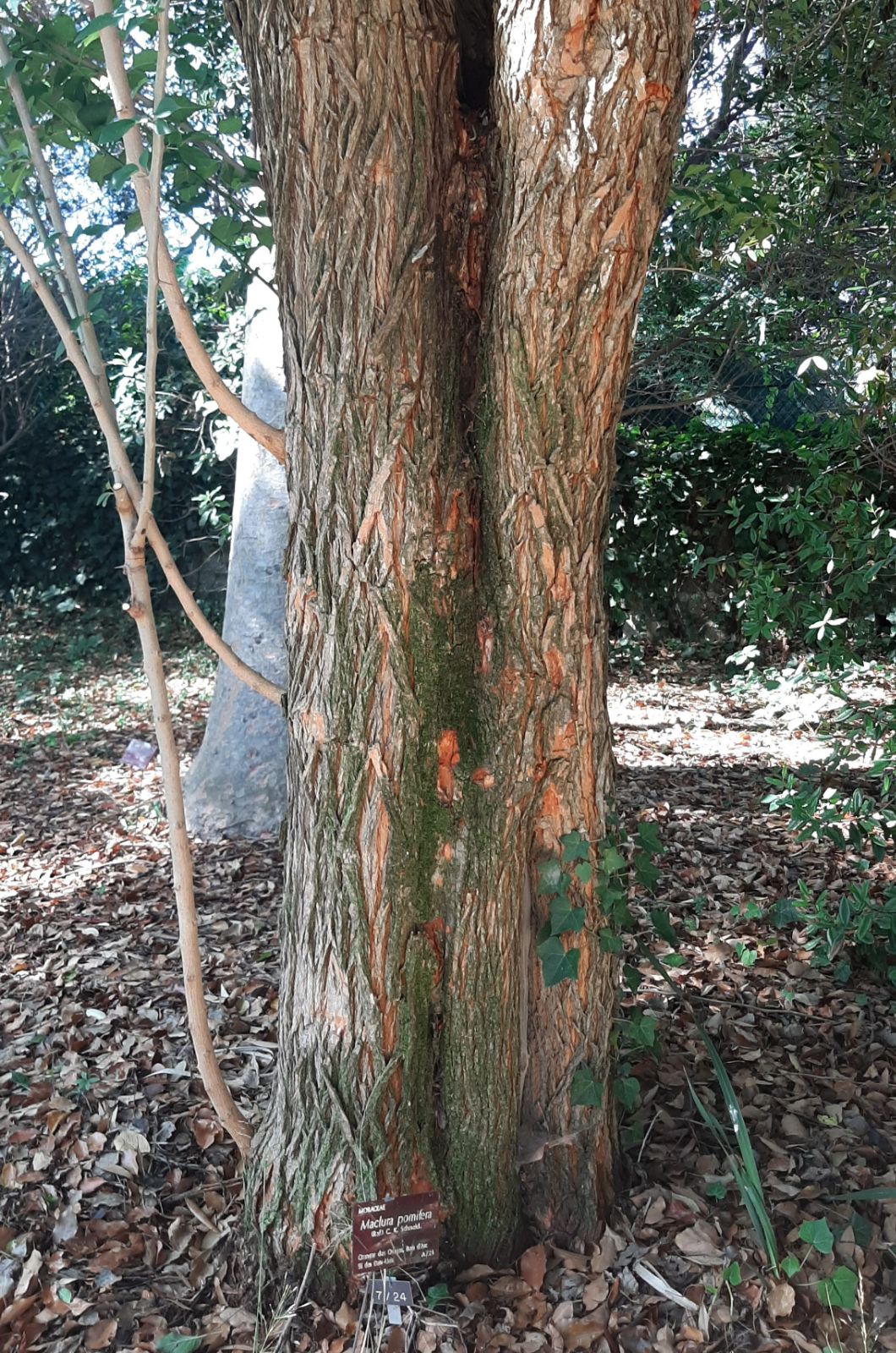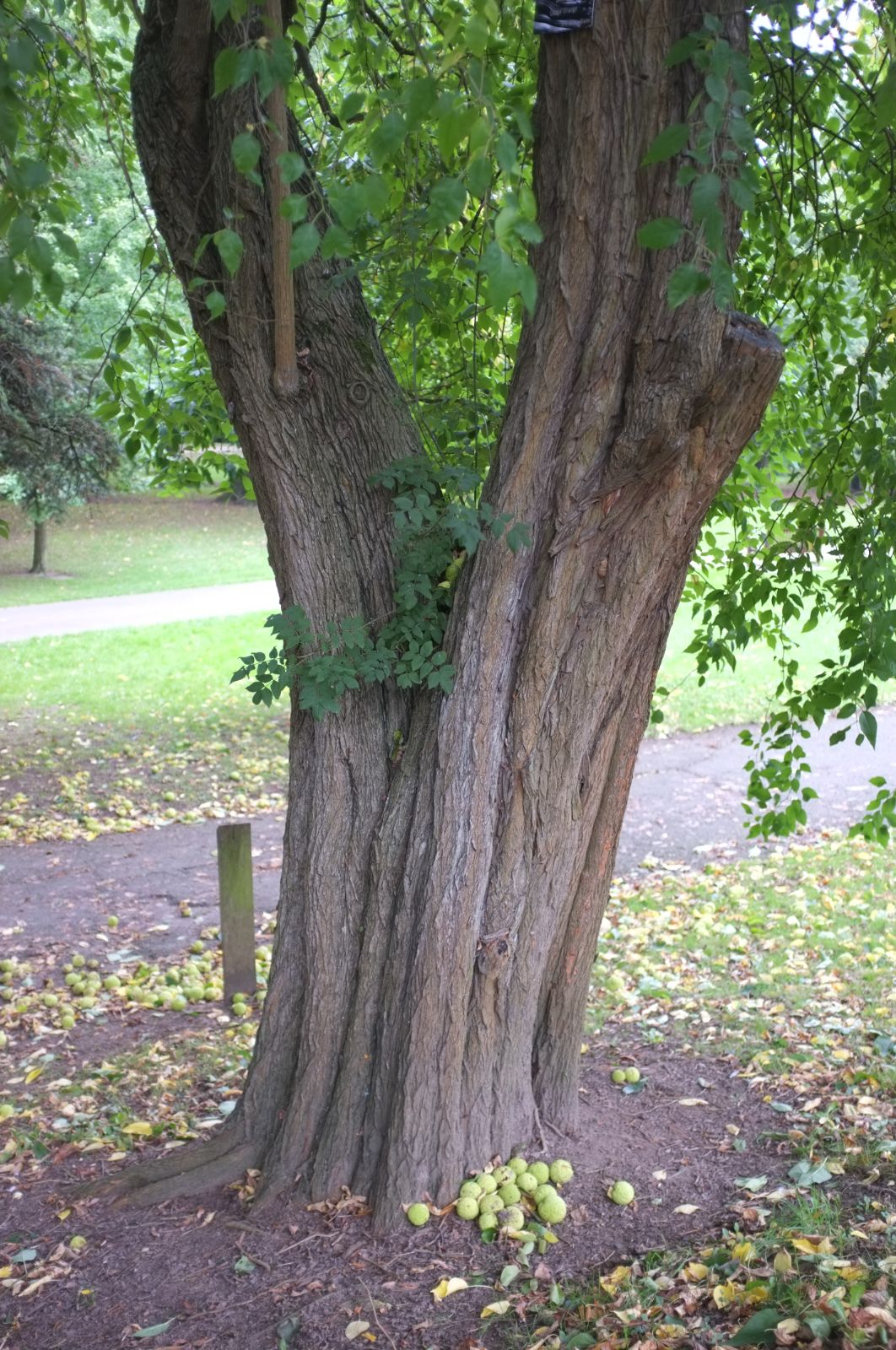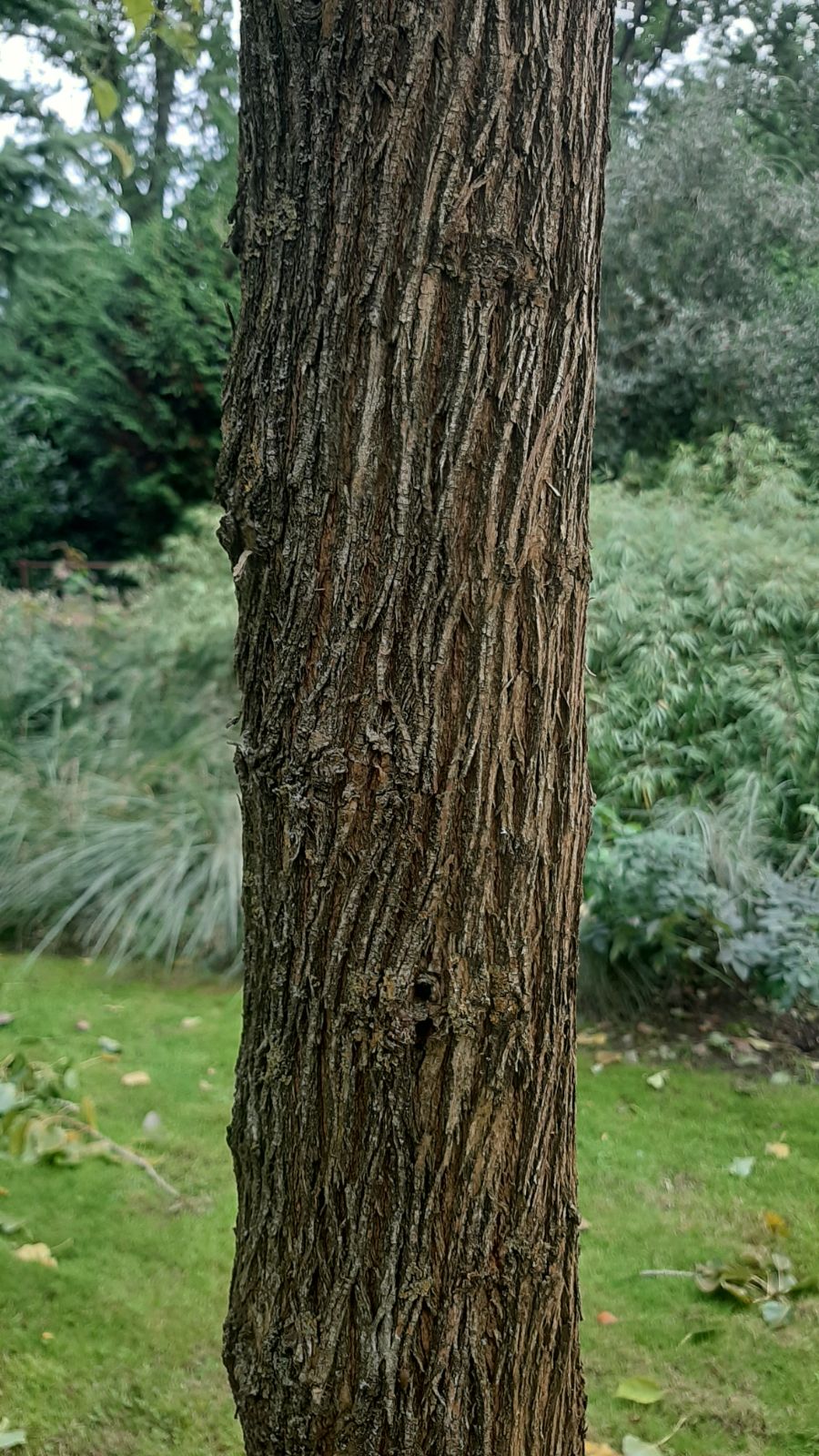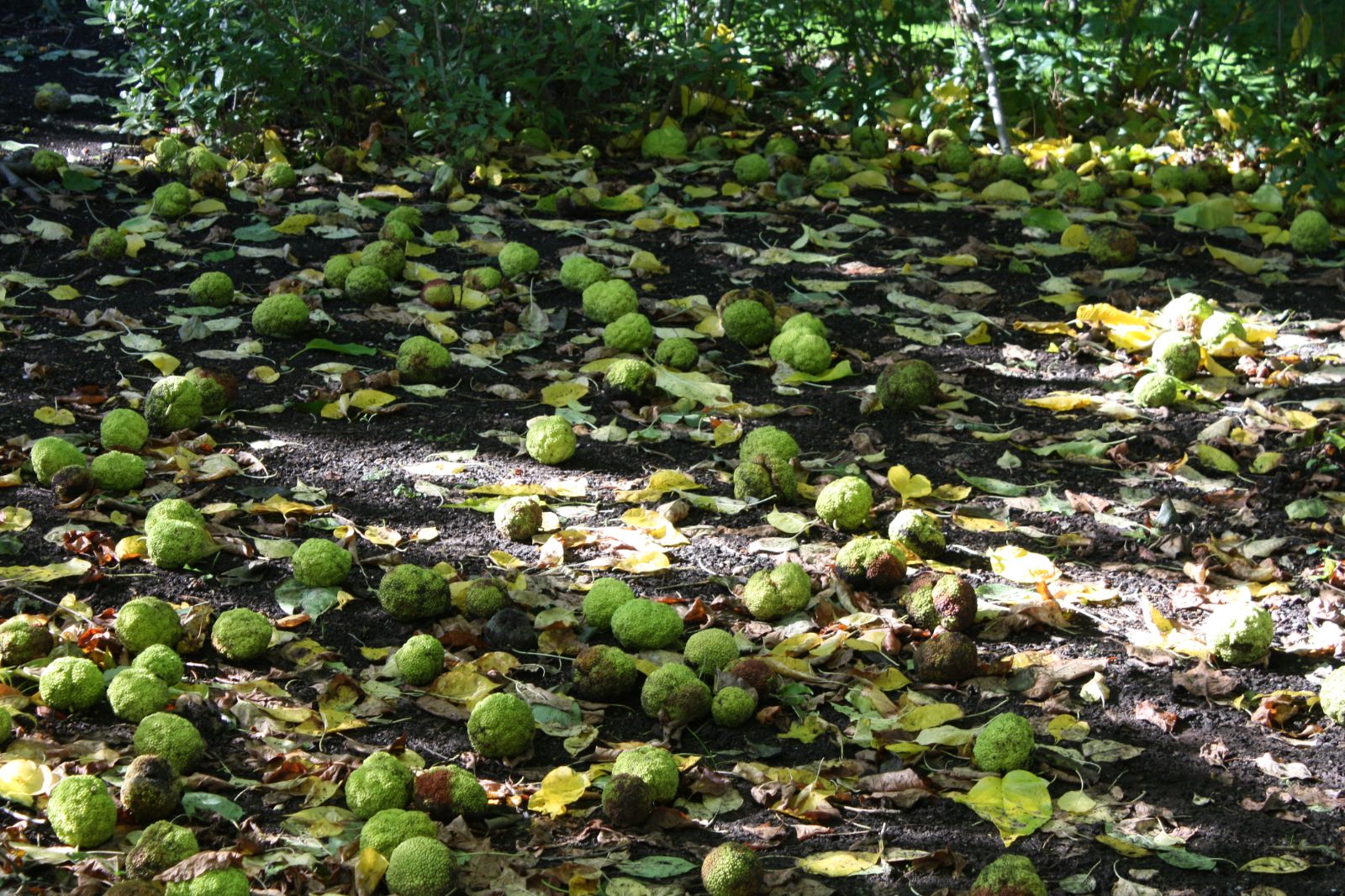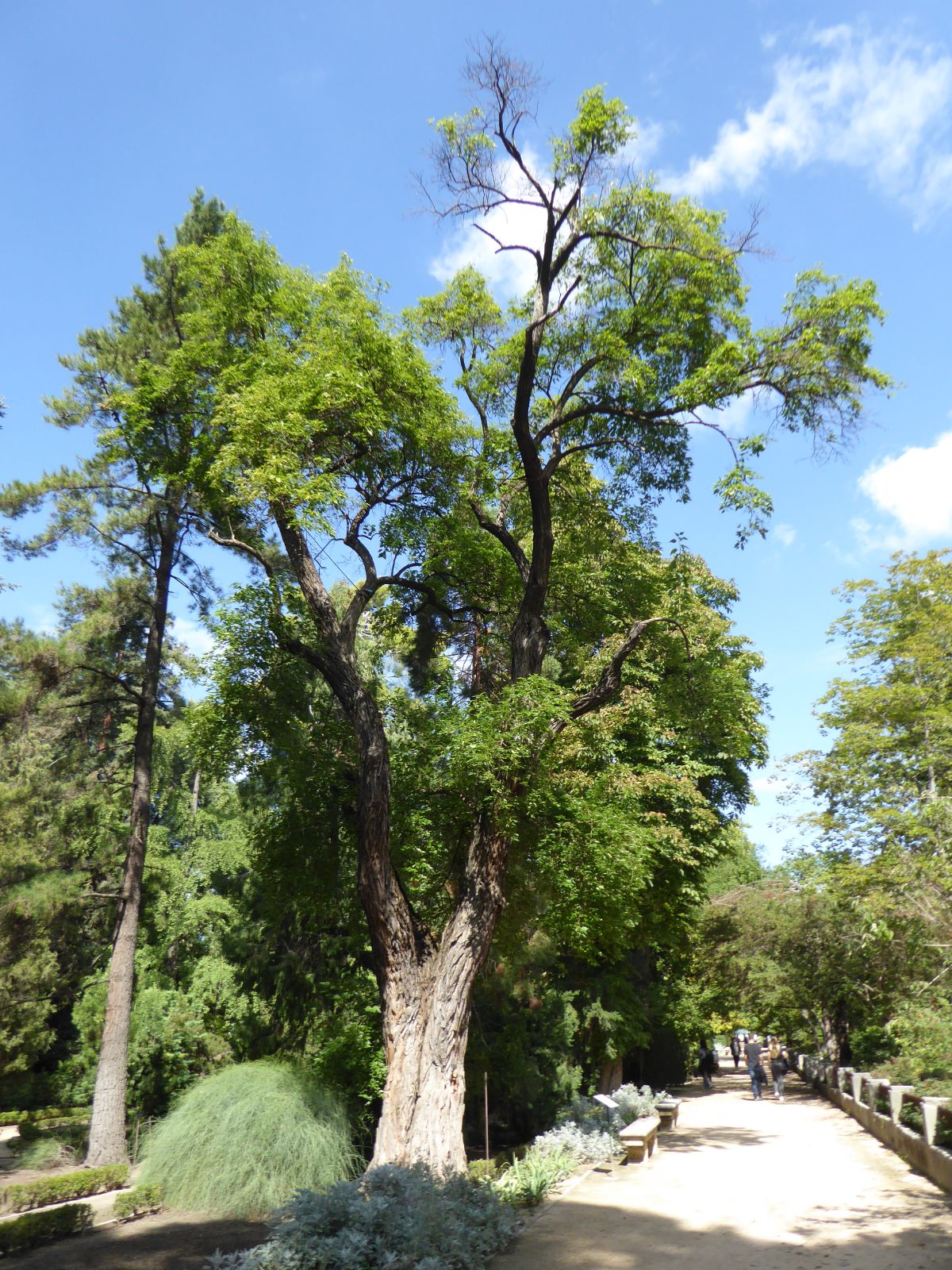Maclura pomifera
Credits
Article from Bean's Trees and Shrubs Hardy in the British Isles
Recommended citation
'Maclura pomifera' from the website Trees and Shrubs Online (treesandshrubsonline.
Other taxa in genus
A deciduous tree occasionally 40 ft or more high; branches armed with spines up to 11⁄4 in. long; young shoots downy, soon becoming glabrous. Leaves alternate, ovate or oval to oblong-lanceolate, 11⁄2 to 4 in. long, about half as wide, pointed, mostly rounded at the base, dark green and glabrous above, paler and downy beneath, especially on the veins and midrib; stalk 1⁄2 to 11⁄2 in. long. Male flowers green, produced in June along with one or two leaves from the joints of the previous year’s wood, numerous in a short-stalked roundish cluster; they are quite inconspicuous, as are also the female ones, borne of separate trees. Fruit like an orange in shape, 2 to 4 in. across, yellowish green.
Native of the South and Central United States; introduced in 1818. This tree is remarkable for its large, ornamental, but quite inedible fruits, rarely seen in this country, perhaps because the two sexes are not often associated. They are full of a milky juice. In the United States this tree is largely used as a hedge plant, and I have also seen it used for the same purpose in Central Europe. Propagated by layers or root-cuttings, in the absence of seeds. Where only one tree is grown, an endeavour should be made to graft the other sex upon it.
There is an example in the University Botanic Garden, Cambridge, which colours clear yellow in the autumn.

